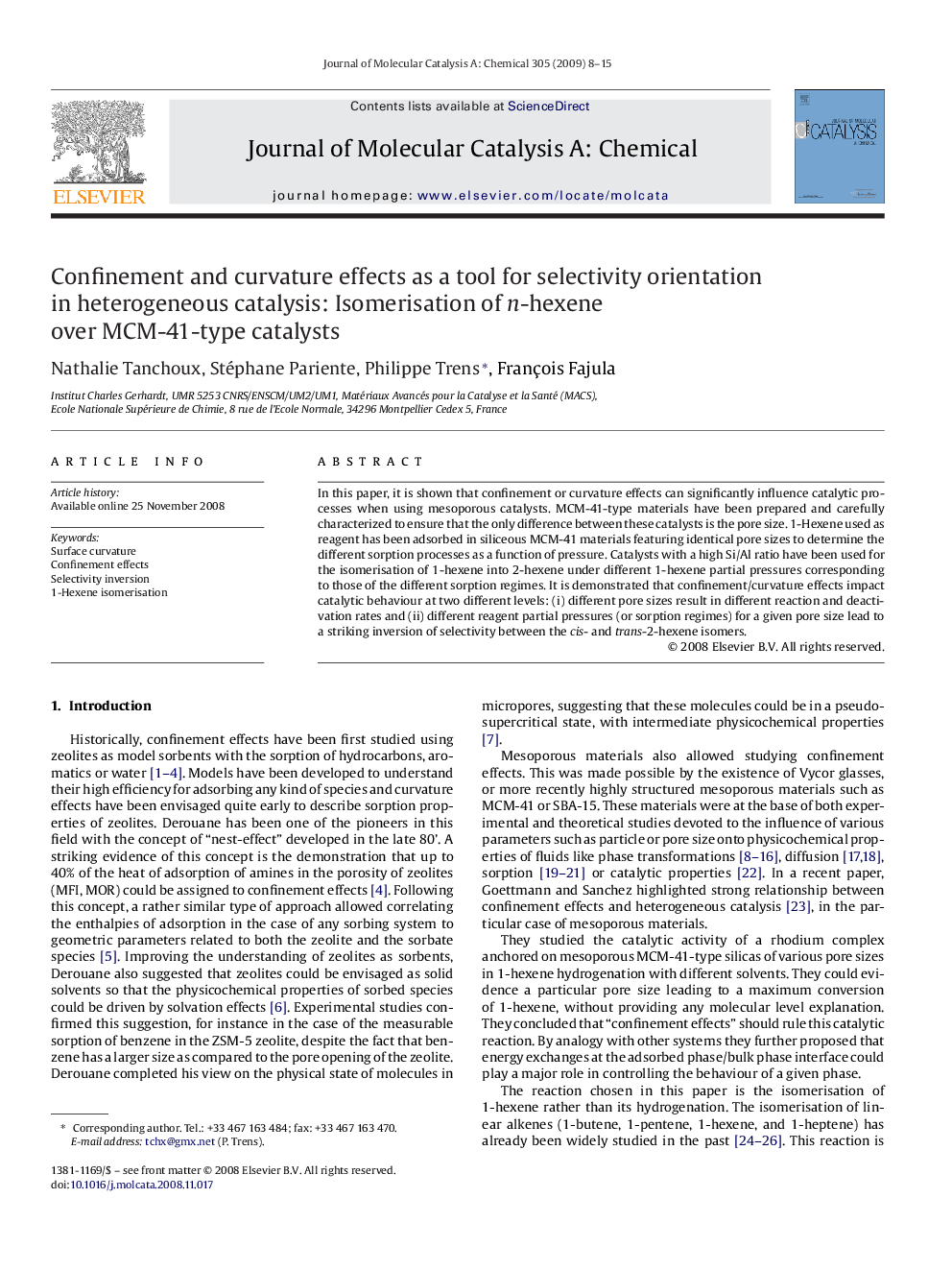| Article ID | Journal | Published Year | Pages | File Type |
|---|---|---|---|---|
| 66968 | Journal of Molecular Catalysis A: Chemical | 2009 | 8 Pages |
In this paper, it is shown that confinement or curvature effects can significantly influence catalytic processes when using mesoporous catalysts. MCM-41-type materials have been prepared and carefully characterized to ensure that the only difference between these catalysts is the pore size. 1-Hexene used as reagent has been adsorbed in siliceous MCM-41 materials featuring identical pore sizes to determine the different sorption processes as a function of pressure. Catalysts with a high Si/Al ratio have been used for the isomerisation of 1-hexene into 2-hexene under different 1-hexene partial pressures corresponding to those of the different sorption regimes. It is demonstrated that confinement/curvature effects impact catalytic behaviour at two different levels: (i) different pore sizes result in different reaction and deactivation rates and (ii) different reagent partial pressures (or sorption regimes) for a given pore size lead to a striking inversion of selectivity between the cis- and trans-2-hexene isomers.
Graphical abstractConfinement or curvature effects can significantly influence catalytic processes when using mesoporous catalysts. The isomerisation of 1-hexene into 2-hexene over MCM-41 catalysts under different 1-hexene partial pressures corresponding to those of the different sorption regimes is studied. Different reagent partial pressures (or sorption regimes) for a given pore size lead to a striking inversion of selectivity between the cis- and trans-2-hexene isomers.Figure optionsDownload full-size imageDownload as PowerPoint slide
